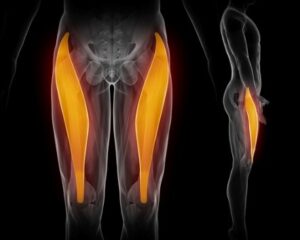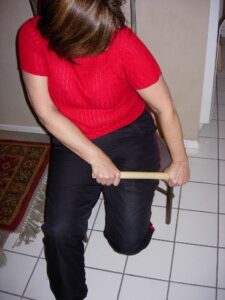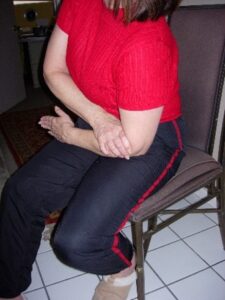A Treatment To Relieve Strain On Your Knee
Author: Julie Donnelly, LMT – The Pain Relief Expert
Editor: Dr. Steve Chaney
It is the Merry Month of May!
 May was the start of the beautiful weather when I lived up in New York. April showers began to bring May flowers. Of course, here in Florida we have flowers all year, so it’s our friends to the north that are enjoying a glorious array of color during this month. For us May is the beginning of the hot weather.
May was the start of the beautiful weather when I lived up in New York. April showers began to bring May flowers. Of course, here in Florida we have flowers all year, so it’s our friends to the north that are enjoying a glorious array of color during this month. For us May is the beginning of the hot weather.
The Snowbirds are leaving Florida and heading back up north. Safe journey. I’ll miss you! It’s funny having friends that are gone 6 months of the year.
But it also means that life is beginning to slow down for us. With most of the snowbirds gone, driving is easier, the stores are less crowded, and we can park at the beach. The weather is still beautiful so we can still go outside to ride a bike, jog, or play the sports we enjoy. This leads me to talk about preventing knee pain.
Preventing Knee Pain
 The weather is beautiful all across the country, which brings more people out to enjoy the sports they love. Whether you like running or cycling, or any sport that puts a strain on your knee, you’re going to really appreciate this month’s newsletter. We’re going to be talking about one of the muscles that put a strain on your knee joint.
The weather is beautiful all across the country, which brings more people out to enjoy the sports they love. Whether you like running or cycling, or any sport that puts a strain on your knee, you’re going to really appreciate this month’s newsletter. We’re going to be talking about one of the muscles that put a strain on your knee joint.
The muscle we’ll be discussing today is the Rectus Femoris, one of the four quadricep muscles. This is the only “quad” that originates on your pelvis, the other three all originate on your thigh bone. This is why this one muscle is what I call “the keystone of the body.”
As you notice in the graphic, as I said it originates on the tip of your pelvis, it then goes down the middle/outisde of your thigh and crosses over your kneecap. The muscle then inserts into the front of your shin bone. When you are sitting and you want to stand up, the rectus femoris, along with the other three quadriceps, shorten in order to straighten your leg.
The problem is, there is an entire pelvic situation that happens when you are sitting for an extended period of time, which makes your pelvis rotate down in the front. This causes the rectus femoris to be too long to do the job of straightening your leg. The body rectifies that problem by tying a “knot” (spasm) in the middle of the muscle, shortening it so it can straighten your leg.
Then another problem happens because you want to bend your knee to sit down or go up stairs. This causes a strain to be placed on your kneecap as you try to bend you knee. Your body then pulls down again on your pelvis so you can bend your knee, and you get into a negative cycle of bones being strained and the muscle knotting up.
The bottom line is your kneecap is pulled up, and you have pain whenever you try to bend your knee.
It’s more complicated than all of that, but too much for a newsletter. If you’re curious, you can get either Treat Yourself to Pain-Free Living or The Pain-Free Athlete and read all about each of the muscles that are involved in this situation.
A Treatment To Relieve Strain On Your Knee
Using a dowel, or a 12”x1” length of PVC pipe, start at the top of your leg and slide, don’t roll, from the top of your leg to just above your kneecap.
After you go over your rectus femoris, and the other quadriceps, then go to the top of any one of the knots. Press down and stay still for 15 seconds.
You can also use the ulnar bone of your forearm, as shown in the picture to the right.
Just press and slide, and then do the same thing and press into each knot to help it release.
Releasing the tension in your quadricep muscles will take the strain off your knee joint. An added benefit of this treatment is it is one of the primary muscles I teach to release low back pain, groin pain, sciatica, and hip pain!
Wishing you well,
Julie Donnelly
www.FlexibleAthlete.com
These statements have not been evaluated by the Food and Drug Administration. This information is not intended to diagnose, treat, cure, or prevent any disease.


